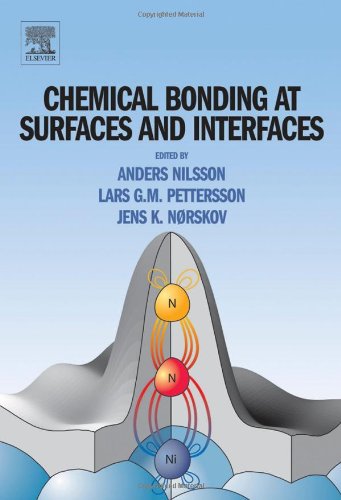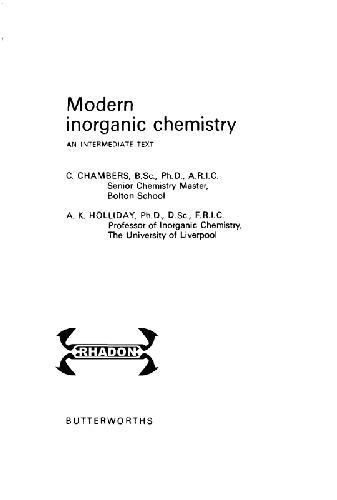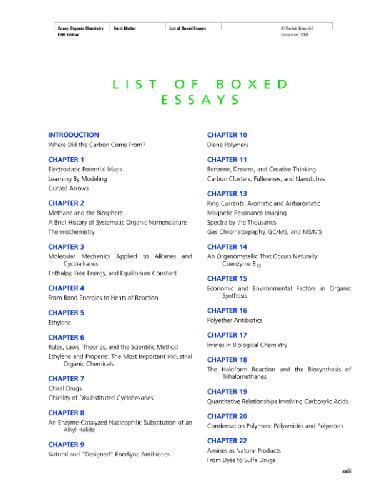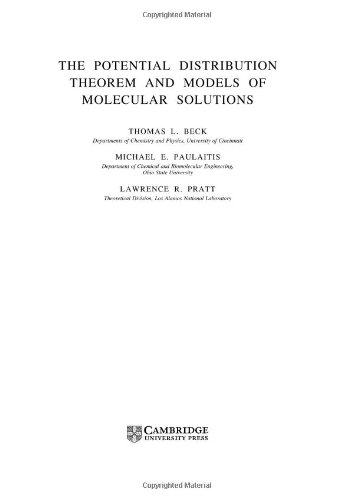Anders Nilsson, Lars G.M. Pettersson, Jens Norskov0444528377, 9780444528377, 9780080551913
Table of contents :
Front Cover……Page 1
Chemical Bonding at Surfaces and Interfaces……Page 4
Copyright Page……Page 5
Table of Contents……Page 6
Preface……Page 12
1. Why surface structure?……Page 14
2.1. General comments……Page 15
2.2. Electron scattering……Page 16
2.3. X-ray scattering……Page 19
2.4. Ion scattering……Page 21
2.5. Spectroscopic methods and scanning probe microscopy……Page 22
3. Adsorbate-induced surface reconstruction……Page 24
4.1. General issues and the case of CO on metals……Page 32
4.2. Simple hydrocarbons on metals……Page 34
4.3. Carboxylates on metals……Page 39
4.4. Other substrates: molecules on Si……Page 46
5.1. Metal surfaces……Page 51
5.2. Oxide surfaces……Page 57
6. Conclusions……Page 61
1. Introduction……Page 70
2. Probing the electronic structure……Page 71
3. Adsorbate electronic structure and chemical bonding……Page 76
4. Adsorbate systems……Page 81
5. Radical atomic adsorption……Page 82
5.1. The electronic structure of N on Cu(100)……Page 83
5.2. Chemical bonding of atomic adsorbates……Page 88
6. Diatomic molecules……Page 92
6.1. N2 adsorbed on Ni(100)……Page 93
6.2. CO adsorbed on Ni(100)……Page 104
6.3. CO adsorbed on Cu(100) and other metals……Page 110
6.4. CO adsorbed in different sites……Page 112
6.5. Coadsorption of CO and K on Ni(100)……Page 114
7. Unsaturated hydrocarbons……Page 116
7.1. Ethylene (C2H4) adsorbed on Ni(110) and Cu(110)……Page 117
7.2. Benzene on Ni and Cu surfaces……Page 124
7.3. Bond energetics and rehybridization from spin-uncoupling……Page 126
8. Saturated hydrocarbons……Page 132
8.1. n-Octane adsorbed on Cu(110)……Page 133
8.2. Difference between octane on Ni and Cu surfaces……Page 139
9.1. Water adsorption on Pt and Cu surfaces……Page 140
9.2. Adsorption of ammonia and the amino group in glycine on Cu(110)……Page 144
10. Summary……Page 147
1. Introduction……Page 156
2.1. Adiabatic dynamics (Born-Oppenheimer approximation)……Page 159
2.2. Generic PES topologies……Page 162
2.3. Dynamics vs. kinetics……Page 165
2.3.1. Direct dissociation……Page 166
2.3.2. Precursor-mediated dissociation……Page 169
2.4. Detailed balance……Page 170
2.5. Lattice coupling……Page 171
2.5.1. Energy transfer in adsorption/scattering……Page 172
2.5.2. Lattice coupling in direct molecular dissociation……Page 176
2.6. Non-adiabatic dynamics……Page 177
2.6.1. Hot electrons from chemistry……Page 178
2.6.2. Chemistry from hot electrons……Page 182
3. Experimental background……Page 185
3.1. Experimental techniques……Page 186
3.2.1. Rate measurements……Page 188
3.2.2. Adsorption-trapping and sticking……Page 189
3.2.3. Desorption……Page 192
3.2.4. Scattering……Page 193
3.2.6. Photochemistry/femtochemistry……Page 194
4. Processes……Page 195
4.1.1. Ar/Pt(111)……Page 196
4.1.2. H/Cu(111)……Page 199
4.2.1. NO/Ag(111)……Page 201
4.2.2. NO/Pt(111)……Page 208
4.3.1. Activated dissociation……Page 211
4.3.2. Weakly activated dissociation……Page 227
4.3.3. Non-activated dissociation……Page 229
4.4.1. O2/Pt(111)……Page 232
4.5.1. N2/W(100)……Page 236
4.5.2. NH3/Ru(0001)……Page 239
4.6.1. (O+CO)/Pt(111)……Page 240
4.7.1. H+H/Cu(111)……Page 243
4.8.1. Photochemistry/femtochemistry……Page 248
4.8.2. Single molecule chemistry……Page 253
5. Summary and outlook……Page 255
1. Introduction……Page 268
2. Factors determining the reactivity of a transition metal surface……Page 269
3. Trends in adsorption energies on transition metal surfaces……Page 270
4.1. One-electron energies and bond energy trends……Page 272
4.2. The Newns-Anderson model……Page 275
5.1. Variations in adsorption energies from one metal to the next……Page 280
5.2. Ligand effects in adsorption – changing the d band center……Page 282
5.2.1. Variations due to changes in surface structure……Page 283
5.2.2. Variations due to alloying……Page 286
5.3. Ensemble effects in adsorption – the interpolation principle……Page 288
6. Trends in activation energies for surface reactions……Page 291
6.1. Electronic effects in surface reactivity……Page 292
6.2. Geometrical effects in surface reactivity……Page 294
7.1. Correlations from DFT calculations……Page 296
7.2. Universal relationships……Page 298
8. Activation barriers and rates……Page 300
8.1. Transition state theory……Page 301
8.2. Variational transition state theory and recrossings……Page 304
8.3. Harmonic transition state theory (HTST)……Page 305
9. Variations in catalytic rates – volcano relations……Page 310
9.1. Dissociation rate-determined model……Page 311
9.2. A Le Chatelier-like principle for heterogeneous catalysis……Page 315
9.3. Including molecular precursor adsorption……Page 316
9.4. Sabatier analysis……Page 318
9.5. A realistic desorption model……Page 320
9.6. Database of chemisorption energies……Page 324
10. The optimization and design of catalyst through modeling……Page 325
10.2. Methanation……Page 326
11. Conclusions and outlook……Page 329
1. Inroduction……Page 336
2. Structure of semiconductor surfaces……Page 338
2.1. Silicon surface structure……Page 339
2.2. Germanium surface structure……Page 343
3.1. Silicon……Page 344
3.2. Germanium……Page 346
4.1.1. Hydride termination of silicon……Page 347
4.2. Germanium passivation……Page 348
4.2.1. Sulfide passivation of germanium……Page 349
4.2.3. Hydride termination of germanium……Page 350
5.2.1. Hydrosilylation……Page 352
5.2.2. Grignard reactions on silicon……Page 358
5.3. Reaction with passivated germanium (Ge−H and Ge−Cl)……Page 359
5.3.1. Grignard reactions on germanium……Page 360
5.3.2. Hydrogermylation……Page 361
5.3.3. Alkanethiol reactions on germanium……Page 362
5.4. Reaction with compound semiconductors……Page 363
6. Adsorption of organic molecules under vacuum conditions……Page 364
6.1.1. Cycloaddition reaction on Si(100)–2×1……Page 365
6.1.2. Heterocycloadditions……Page 374
6.1.3. Nucleophilic/electrophilic reactions……Page 375
6.2. Germanium surface chemistry……Page 382
6.2.1. Cycloaddition reactions on Ge(100)–2×1……Page 383
6.2.2. Heterocycloadditions……Page 385
6.2.3. Nucleophilic/electrophilic reactions……Page 387
6.2.4. Multiple-layer reactions……Page 389
6.3. Summary of concepts in organic functionalization……Page 391
1. Introduction……Page 410
2. Special features of electrochemical reactions……Page 411
2.1. Electrochemical current and potential……Page 412
2.2. Electrochemical interfaces……Page 417
2.3. Models of electrochemical electron transfer kinetics……Page 419
3.1. Surface structure……Page 425
3.2. Bonding of ions……Page 426
3.3. Bonding of water……Page 428
3.4. Experimental aspects of current/voltage properties……Page 429
4. Electrocatalytic reaction processes……Page 431
4.1.1. Background……Page 433
4.1.2. Mechanistic pathways……Page 435
4.1.3. Electroreduction of oxygen on Pt and Pt alloys……Page 436
4.1.4. Recent quantum chemical studies of the ORR mechanism……Page 438
4.1.5. State-of-the-art ORR electrocatalyst concepts……Page 444
4.2. The electrochemical oxidation of small organic molecules……Page 448
4.2.1. The electrooxidation of carbon monoxide……Page 451
4.2.2. The electrooxidation of formic acid and methanol……Page 457
5. Summary and outlook……Page 461
1. Introduction……Page 470
2.1. Common minerals in Earth’s crust, soils, and atmosphere, weathering mechanisms and products, and less common minerals that contain or adsorb……Page 474
2.2. Solubilities of Al- and Fe(III)-oxides and Al and Fe(III)-(oxy)hydroxides……Page 479
2.3. Dissolution mechanisms at feldspar–water interfaces……Page 482
2.4. The nature of metal oxide-aqueous solution interfaces – some basics……Page 485
3. Factors affecting the chemical reactivity of mineral surfaces……Page 491
3.1. The reaction of water vapor with metal oxide surfaces – surface science and theoretical studies of simplified model systems illustrating effects of……Page 492
3.2. Grazing incidence EXAFS spectroscopic studies of Pb(II)aq adsorption on metal oxide surfaces – effect of differences in surface functional groups on……Page 497
3.3. The structure of hydrated metal oxide surfaces from X-ray diffraction studies……Page 501
3.4. X-ray standing wave studies of the electrical double layer at solid-aqueous solution interfaces and in situ measurements of surface reactivity……Page 509
3.5. Effect of organic coatings and microbial biofilms on metal oxide surface reactivity – X-ray standing wave studies of metal ion partitioning between……Page 512
4. Conclusions……Page 517
Index……Page 524







Reviews
There are no reviews yet.